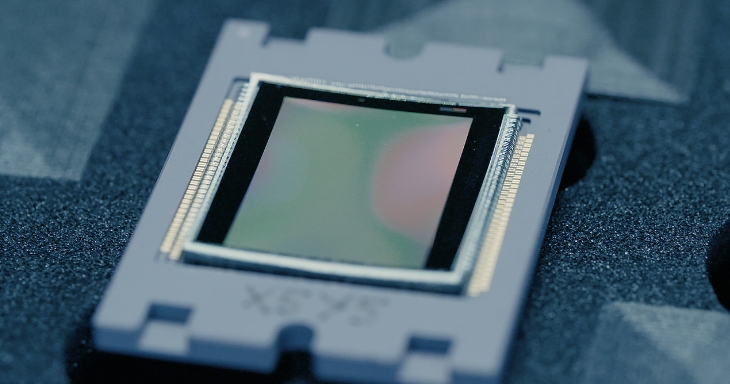Since the advent of sensors, they have become indispensable infrastructure devices in the digital age, enabling humans to access information that was once difficult or inaccessible. From smartphones to smart home devices, from power stations to industrial systems, sensors have become like extended sensory organs, bridging the gap between humans and machines, as well as the natural environment.
With advancements in sensor technology and related software and hardware, including data storage, energy storage, new materials, and network infrastructure, coupled with decreasing costs, the applications of sensors will continue to expand. EIGHT FUTURE TRENDS
EIGHT FUTURE TRENDS
In the coming years, we can expect to see even more sensors integrated into our daily lives. These sensors will become smaller, more affordable, more accurate, and more flexible. They will also be more energy-efficient, environmentally friendly, and capable of collecting a wider range of data, while being integrated with various new technologies.
Advancements in Medical Applications:
Currently, sensors primarily cater to entertainment and residential sectors rather than the medical field. However, with stringent supervision, more medical-grade sensors will be approved for use in healthcare. As laboratory systems shrink and biohazard sensing technologies advance, wearable sensors will evolve into sophisticated medical devices. These devices will streamline medical testing, analyzing a wider range of substances with reduced sample volumes. For instance, health conditions can be assessed through sweat and tear analysis. The miniaturization of laboratory systems, exemplified by swallowable pills, is already revolutionizing healthcare. Swallowable sensors are replacing traditional endoscopy, offering patients a less invasive option. Some tech companies are even developing swallowable or implantable pills for continuous, long-term treatment.
Enhanced Sensing Capabilities:
Future sensors will efficiently mimic human organs, detecting, processing, and analyzing complex signals like biohazards, odors, material pressure, pathogens, and corrosion. These advanced sensors can detect numerous analytes and decipher every component of an odor. Microscopic sensors, known as smart motes, driven by vibration, can monitor diverse environments, from battlefields to arteries.
Miniaturization and Cost Reduction:
New platforms and materials enable manufacturers to produce smaller sensors with equivalent capabilities to electronic components at the millimeter and microwave levels. Reduced silicon usage and increased adoption of new platforms will lower costs. Self-calibration sensors offer long-term benefits by reducing maintenance frequency and time, particularly in disaster and high-risk scenarios.
Improved Accuracy:
Research on multi-channel collaborative spectrum sensing is nascent but holds promise for providing more accurate data monitoring than single-channel sensors. Enhanced accuracy, reliability, and reproducibility will drive the adoption of sensors in the medical field, enabling more robust functionalities.
Enhanced Precision:
Currently, multi-channel collaborative spectrum sensing is in its early stages of research. However, once matured, it will offer significantly more accurate data monitoring compared to single-channel sensors. Sensors with improved accuracy, reliability, and reproducibility will gain greater traction in the medical field, enabling more robust functionalities.
Increased Flexibility:
The development of flexible sensors, including pH sensors, ion sensors, and bio-sensors, is still in its infancy. These sensors hold great potential for applications such as artificial skin, wearable sensors, and micro-motion sensors. Utilizing microwire technology and magnetic fields, these sensors can be as thin as a hair, yet elastic, and capable of measuring various parameters without direct contact, such as temperature, pressure, tensile strength, stress, torsion, and position.
Reduced Power Consumption:
Most sensors currently in use are not energy-efficient as they remain active even when not in use. In the future, sensors will become smarter, activating only under specific conditions and consuming minimal power during idle periods. Moreover, sensors can harness energy from the environment, such as motion, pressure, light, or temperature differentials between the patient and the surrounding air, for prolonged operation.
Environmental Friendliness:
Future sensors will prioritize environmental sustainability, with a rise in environmentally friendly and biodegradable sensor technologies. For instance, sensors powered by bacteria-driven, degradable paper-based batteries can find applications in farm management, environmental monitoring, food safety, and medical diagnostics without causing harm to the environment.
In conclusion, Sensors will become more complex through collaborative efforts, enabling coordinated work among sensor groups to achieve targeted objectives. Furthermore, advancements in various technologies, such as laser technology for spectral analysis, time-of-flight sensors for distance measurement, and piezoelectric sensors for improved responsiveness to external stimuli, will diversify sensor functionalities and integration capabilities.
With advancements in sensor technology and related software and hardware, including data storage, energy storage, new materials, and network infrastructure, coupled with decreasing costs, the applications of sensors will continue to expand.
 EIGHT FUTURE TRENDS
EIGHT FUTURE TRENDSIn the coming years, we can expect to see even more sensors integrated into our daily lives. These sensors will become smaller, more affordable, more accurate, and more flexible. They will also be more energy-efficient, environmentally friendly, and capable of collecting a wider range of data, while being integrated with various new technologies.
Advancements in Medical Applications:
Currently, sensors primarily cater to entertainment and residential sectors rather than the medical field. However, with stringent supervision, more medical-grade sensors will be approved for use in healthcare. As laboratory systems shrink and biohazard sensing technologies advance, wearable sensors will evolve into sophisticated medical devices. These devices will streamline medical testing, analyzing a wider range of substances with reduced sample volumes. For instance, health conditions can be assessed through sweat and tear analysis. The miniaturization of laboratory systems, exemplified by swallowable pills, is already revolutionizing healthcare. Swallowable sensors are replacing traditional endoscopy, offering patients a less invasive option. Some tech companies are even developing swallowable or implantable pills for continuous, long-term treatment.
Enhanced Sensing Capabilities:
Future sensors will efficiently mimic human organs, detecting, processing, and analyzing complex signals like biohazards, odors, material pressure, pathogens, and corrosion. These advanced sensors can detect numerous analytes and decipher every component of an odor. Microscopic sensors, known as smart motes, driven by vibration, can monitor diverse environments, from battlefields to arteries.
Miniaturization and Cost Reduction:
New platforms and materials enable manufacturers to produce smaller sensors with equivalent capabilities to electronic components at the millimeter and microwave levels. Reduced silicon usage and increased adoption of new platforms will lower costs. Self-calibration sensors offer long-term benefits by reducing maintenance frequency and time, particularly in disaster and high-risk scenarios.
Improved Accuracy:
Research on multi-channel collaborative spectrum sensing is nascent but holds promise for providing more accurate data monitoring than single-channel sensors. Enhanced accuracy, reliability, and reproducibility will drive the adoption of sensors in the medical field, enabling more robust functionalities.
Enhanced Precision:
Currently, multi-channel collaborative spectrum sensing is in its early stages of research. However, once matured, it will offer significantly more accurate data monitoring compared to single-channel sensors. Sensors with improved accuracy, reliability, and reproducibility will gain greater traction in the medical field, enabling more robust functionalities.
Increased Flexibility:
The development of flexible sensors, including pH sensors, ion sensors, and bio-sensors, is still in its infancy. These sensors hold great potential for applications such as artificial skin, wearable sensors, and micro-motion sensors. Utilizing microwire technology and magnetic fields, these sensors can be as thin as a hair, yet elastic, and capable of measuring various parameters without direct contact, such as temperature, pressure, tensile strength, stress, torsion, and position.
Reduced Power Consumption:
Most sensors currently in use are not energy-efficient as they remain active even when not in use. In the future, sensors will become smarter, activating only under specific conditions and consuming minimal power during idle periods. Moreover, sensors can harness energy from the environment, such as motion, pressure, light, or temperature differentials between the patient and the surrounding air, for prolonged operation.
Environmental Friendliness:
Future sensors will prioritize environmental sustainability, with a rise in environmentally friendly and biodegradable sensor technologies. For instance, sensors powered by bacteria-driven, degradable paper-based batteries can find applications in farm management, environmental monitoring, food safety, and medical diagnostics without causing harm to the environment.
In conclusion, Sensors will become more complex through collaborative efforts, enabling coordinated work among sensor groups to achieve targeted objectives. Furthermore, advancements in various technologies, such as laser technology for spectral analysis, time-of-flight sensors for distance measurement, and piezoelectric sensors for improved responsiveness to external stimuli, will diversify sensor functionalities and integration capabilities.
Previous: Application of CO2 Sensor in Liquor Fermentation
Next: Sensors and Detection Solutions in Energy Storage Systems (ESS)





